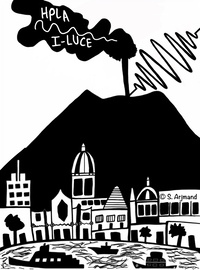Conveners
Facility session
- Giacomo Cuttone (Istituto Nazionale di Fisica Nucleare)
Facility session
- Sahar Arjmand (Istituto Nazionale di Fisica Nucleare)
Facility session
- Dario Lattuada (Istituto Nazionale di Fisica Nucleare)
In this presentation, the authors will provide an overview of the upcoming INFN I-LUCE facility, a new high-power laser infrastructure dedicated to advanced research in radiation sources and applications. The talk will introduce the facility layout and its two laser systems, outlining their main capabilities and scientific goals. Particular emphasis will be placed on the integrated approach...
The I-LUCE facility will host two state-of-the-art laser systems: a high-repetition-rate laser delivering 9 mJ in 34 fs pulses at 1 kHz, and a more powerful system capable of reaching up to 320 TW, with a repetition rate between 3.3 Hz and 10 Hz and pulse duration of 23 fs. Efficient and flexible beam transport is critical to fully exploit the capabilities of these lasers. The first laser...
In this talk, the author will present the ongoing development of strategies for laser plasma electron acceleration at the I-LUCE facility. Both I-LUCE laser systems will be employed to accelerate electrons, with energies expected to span from 1 MeV up to 3 GeV during the first operational phase. Different acceleration schemes will be explored, including gas-jet and micro-jet targets for the...
Both research and technological applications have contributed to the steady increase in interest in compact neutron sources in recent years. The majority of neutron sources nowadays depend on large infrastructure like nuclear reactors or particle accelerators, which have high costs and have problems with the generation of radioactive waste.
A viable substitute is laser-driven neutron...
Recent progress in multi-petawatt (PW) laser technology has enabled compact, high-energy electron acceleration and intense photon generation, expanding the frontier of laser–plasma physics. Using a 4 PW laser system [1], we demonstrated a high-quality 4.5 GeV electron beam from a helium gas cell doped with 1% neon, establishing a foundation for GeV-scale, table-top electron accelerators. The...
The European laser user facilities and associated projects underwent an enormous development within the last few years and are of great interest in the perspective of developing the future of scientific research and the integrations of science and applications.
To explore the outlook for European laser user facilities it’s fundamental to consider (but not only) ELI ERIC, EU-XFEL, EPAC,...
In 2022, the National Ignition Facility achieved a historic milestone by demonstrating fusion ignition with energy gain greater than unity using the indirect-drive inertial confinement fusion (ICF) approach. However, the indirect-drive scheme is intrinsically inefficient and cannot realistically achieve the high energy gains required for a viable fusion power plant. Consequently, research...
An overview of the experimental research activities in the field of laser-driven particle acceleration carried out at the Intense Laser Irradiation Laboratory of the National Institute of Optics of CNR in Pisa will be given. A glimpse at the main applications of laser-driven particle beams pursued by the ILIL group will be provided. Finally, the ongoing major laboratory upgrade, including the...
The UK has been at the forefront of development in high power lasers since the 1970s , with the Central Laser Facility (CLF) at the Rutherford Appleton Laboratory providing world-class laser systems to national and international users. Since the early 2000s, Petawatt class systems such as the ND:glass VULCAN PW (500 fs, 500 J) and the Ti:SA ASTRA GEMINI laser (2 X15 J, 35 fs) have provided...
The Centre for Advanced Laser Applications (CALA) in Garching has the principal goal to develop sensitive and cost-efficient laser-based methods for detection and therapy of cancer and other types of chronic disease. Current efforts focus on the use of high-intensity X-rays for diagnostic biomedical imaging, the application of laser-generated proton and carbon-ion beams to tumor therapy and...
Ion stopping in dense plasmas remains a fundamental yet not fully understood topic in modern physics. It plays a central role in Inertial Confinement Fusion (ICF), where target self-heating by alpha particles initiates ignition and thermonuclear gain. The phenomenon is even more critical for target-heating schemes that employ ion beams as the primary drivers, such as in heavy-ion fusion or...

